History of the Sound Suppressor
April 4th, 2023
5 minute read
Some families just have exceptional genes. The three Manning boys have done fairly well at football. John Moses Browning was the most successful firearms designer in human history, with 128 gun-related patents to his name. His brother Ed was also instrumental in the design of the iconic M1 Carbine. In a similar vein, the Maxim family had an outsized influence on the world of firearms.
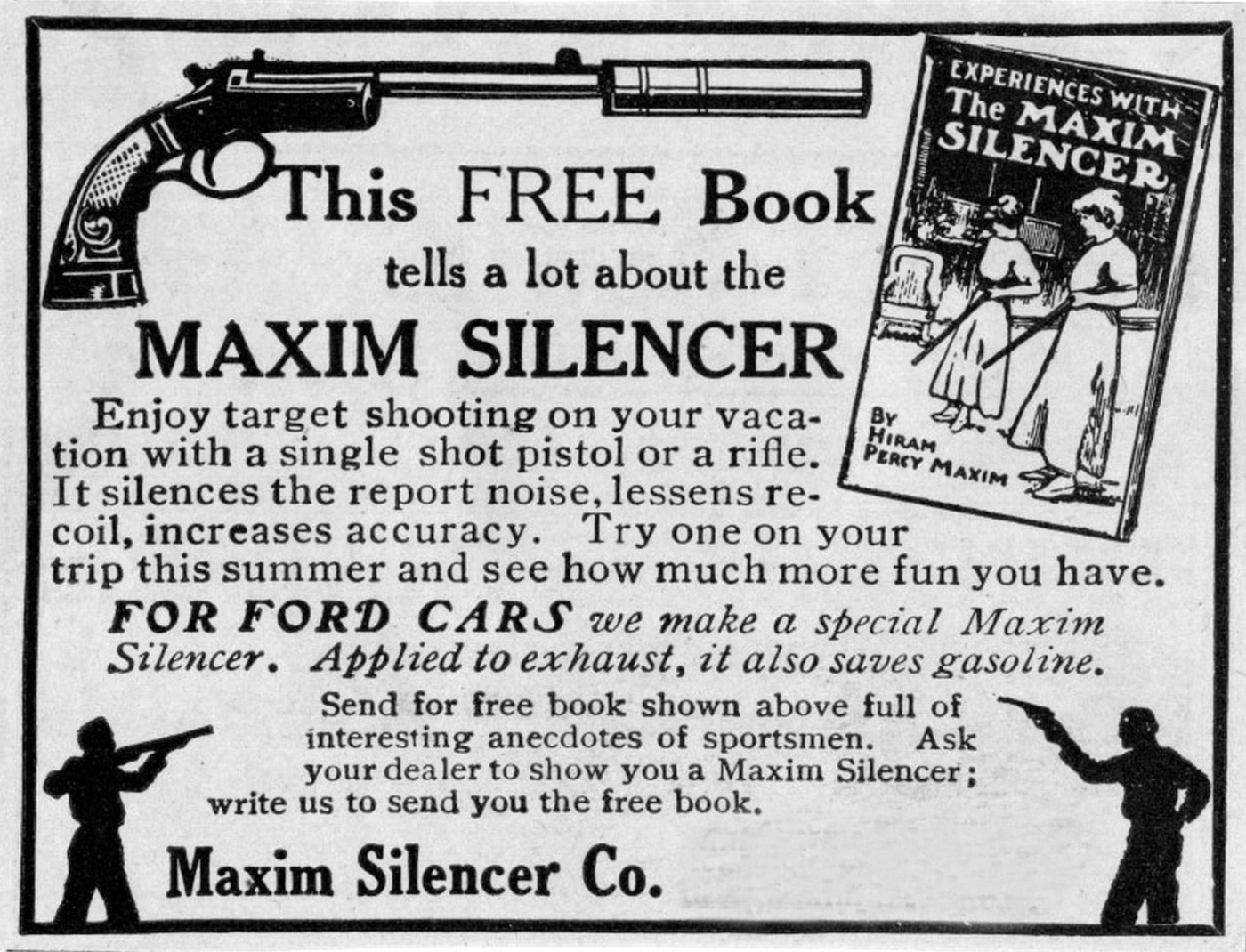
In the Beginning…
Hiram Stevens Maxim was an American inventor who produced the world’s first portable fully automatic machine gun. Maxim’s basic mechanism drove the eponymous German MG08 Maxim gun as well as the British Vickers. The sheer volume of blood spilled by Maxim’s remarkable invention during the First World War boggles the mind. Maxim moved from the U.S. to the U.K. at age 41 and became a naturalized British subject in 1899. He was knighted in 1901.
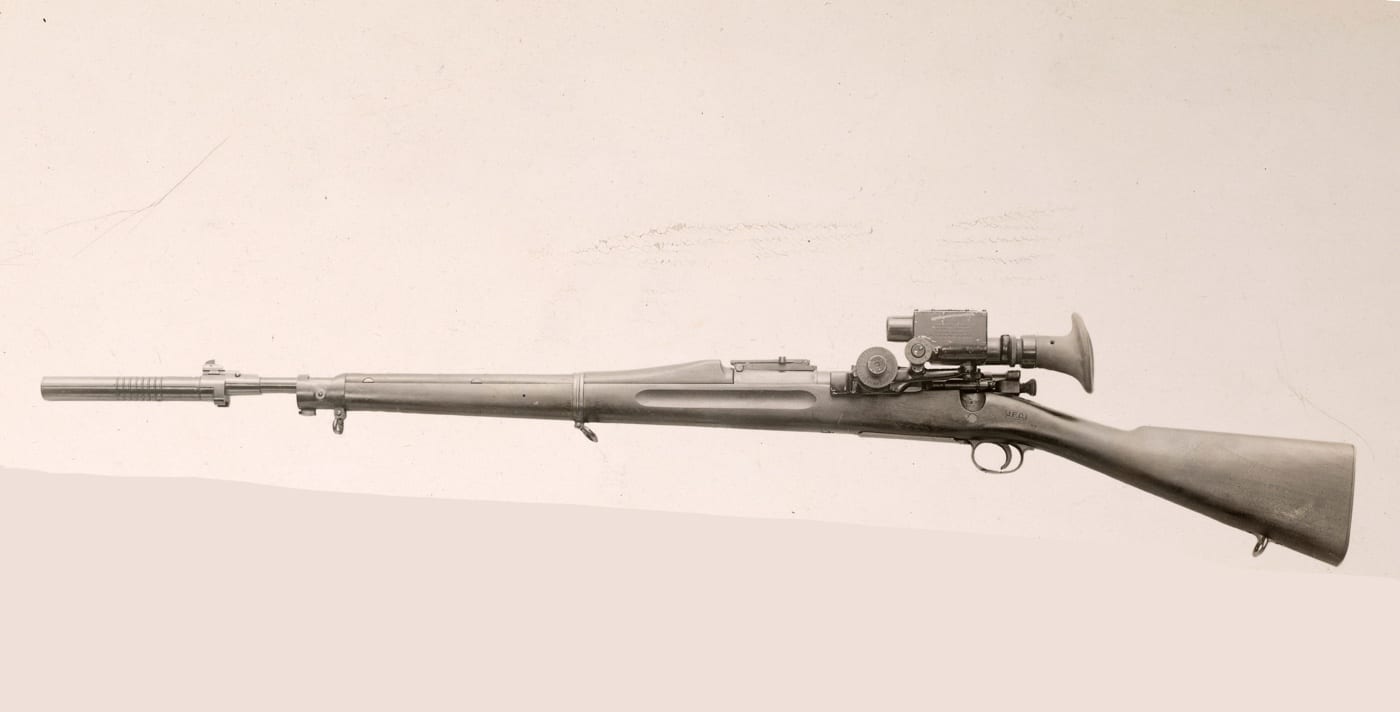
Hiram Stevens’ son Percy was a pretty quick kid in his own right. A pioneer in the field of radio, the younger Maxim was co-founder of the American Radio Relay League. He also developed and marketed the world’s first successful sound suppressor for a firearm. He used these same skill sets to design mufflers for internal combustion engines. In 1899 Hiram Percy Maxim won the first U.S. closed-circuit automobile race at the wheel of a Pope Columbia racer. As I said, a pretty quick kid.
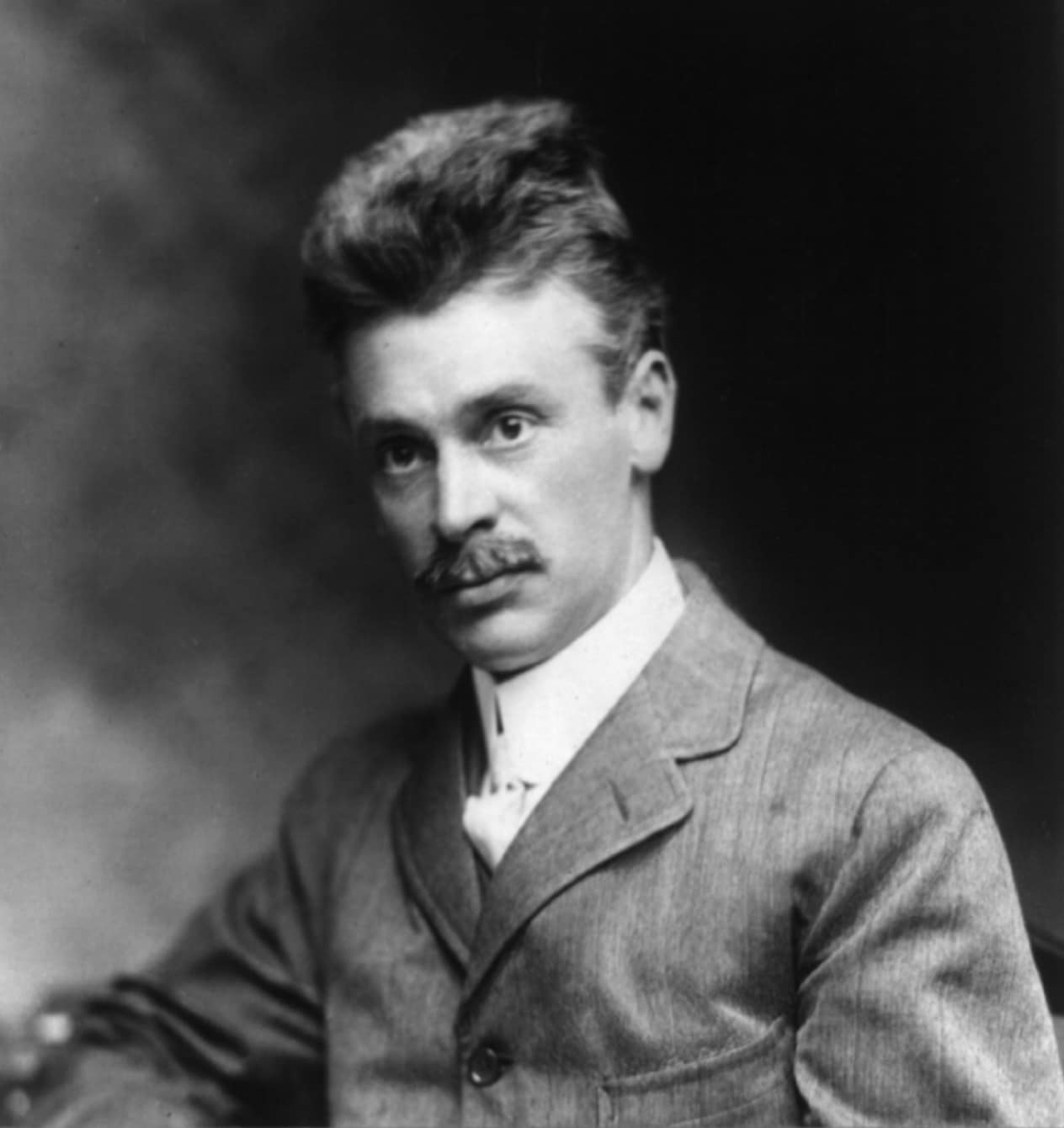
Maxim was granted a patent for his firearm muffler, the name of which he trademarked as the Maxim Silencer, in 1909. President Theodore Roosevelt was said to be an enthusiastic early adopter. Maxim sold his devices through the pages of sporting goods magazines in the early 20th century.
The Motorized Bandit
The trajectory of the sound suppressor took a dark turn in the 1930s amidst the era of the motorized bandit. Devil-may-care opportunists like John Dillinger and cold-hearted psychopaths the likes of Baby Face Nelson earned their headlines amidst the throes of Prohibition by unleashing chaos upon an unsuspecting American public. At least, that’s the way the media described it. The reality was that, then as now, blood and sex sold papers and politicians were quick to weaponize a crisis. The end result was the National Firearms Act of 1934 (otherwise known as the NFA — learn more about it here).
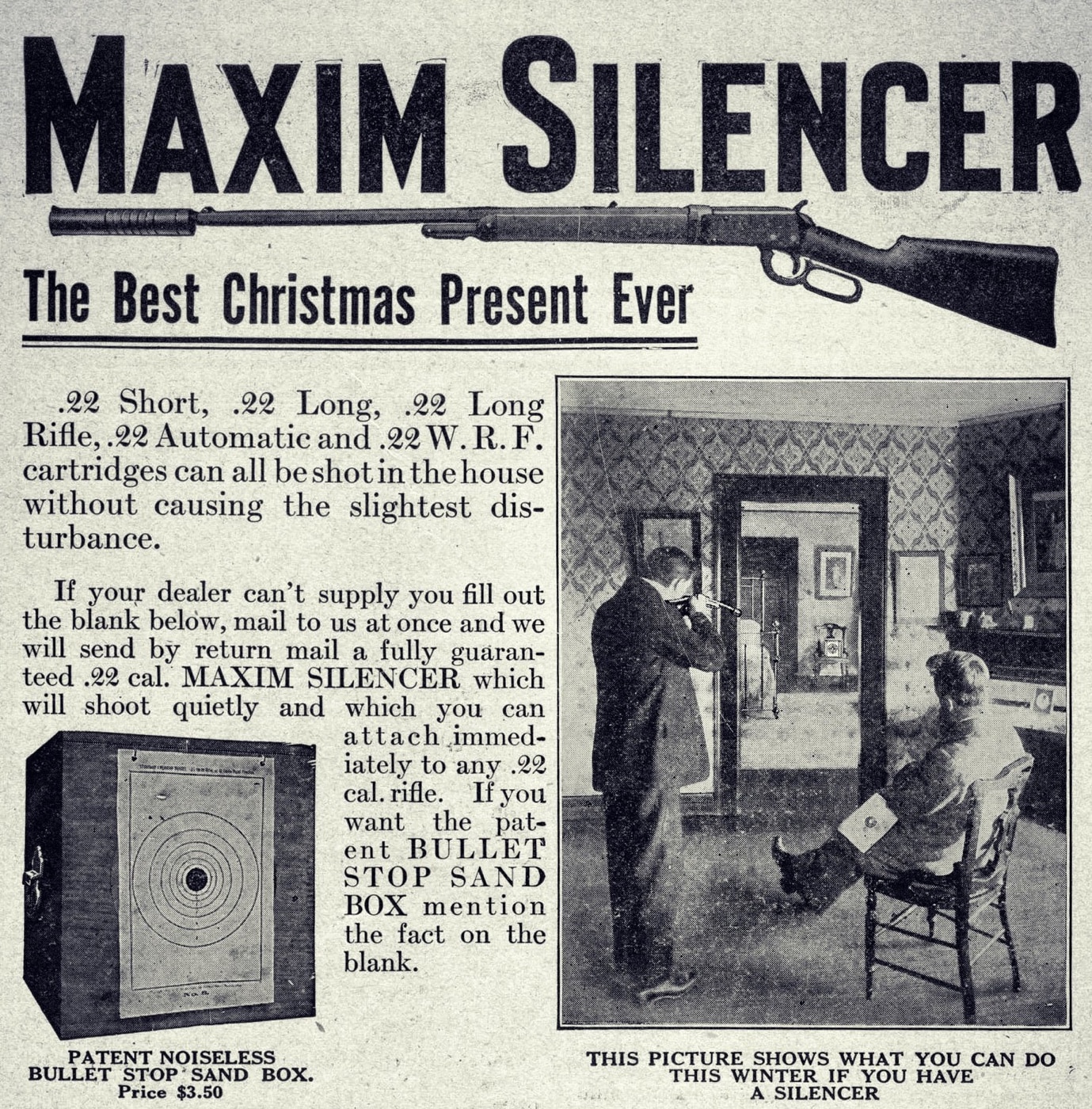
In the 1930s, politicians still infrequently read the Constitution they were sworn to support and defend. They appreciated that this holy document did not allow them to ban anything outright. However, they did freely exercise their capacity to levy taxes.
When faced with the opportunity to regulate weapons they deemed unduly dangerous, these public servants simply taxed them out of existence. The NFA established a $200 transfer tax on sound suppressors every time they crossed state lines in public commerce. As $200 in 1934 was nearly $4,000 today, is it any wonder the trade in such stuff as machine guns and sound suppressors ground to a halt?
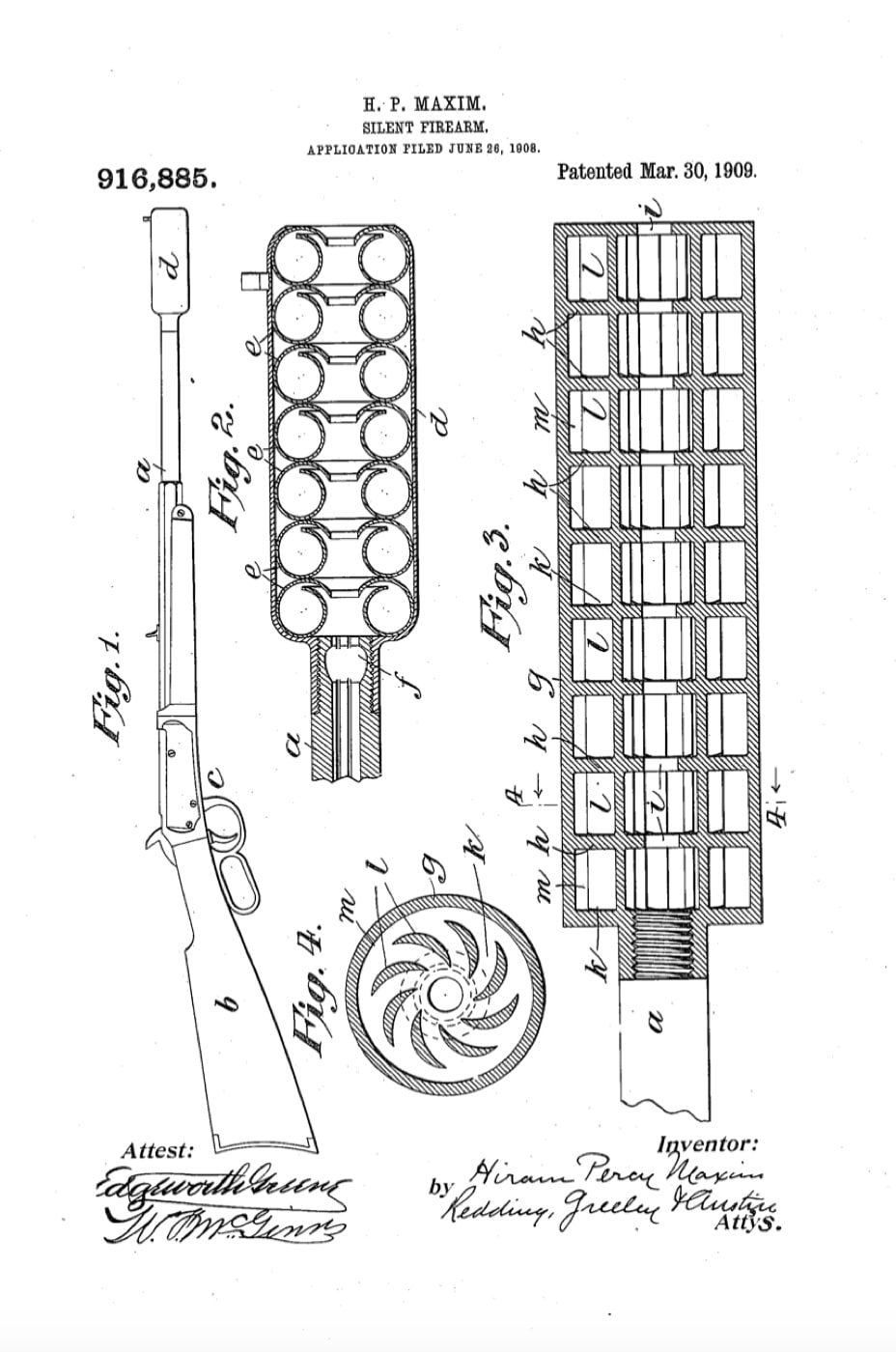
The inclusion of sound suppressors underneath the NFA is itself a fascinating tale. There has never been any significant crime committed with these devices. About the most malevolence you could foment with one would be to hit somebody over the head with it. However, in the aftermath of the Great Depression, Americans were legitimately hungry.
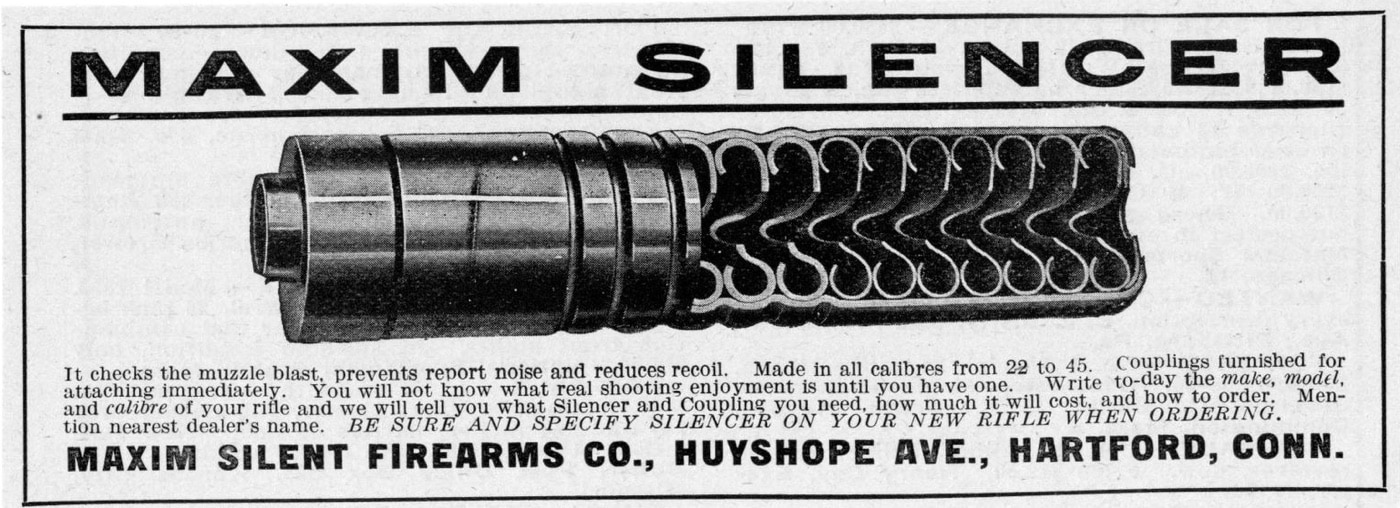
One of the primary driving forces behind regulating sound suppressors was to help control poaching. It was felt that if you could purchase sound suppressors freely then hungry folks might be more inclined to poach game from the estates of wealthy landowners. As a result, these innocuous little tubes got lumped into the NFA alongside Browning Automatic Rifles.
The Landscape Today
Fast forward some 86 years, and $200 is not the lofty impediment it once was. While certainly not front pocket change, a $200 transfer tax is now within reach of many American shooters. As of 1986, the production of machine guns for sale to civilians was gone, never to return, but the suppressor industry is booming. There are currently around one million sound suppressors registered in the National Firearms Registry and Transfer Record.

Cinematic depictions notwithstanding, there is no crime worthy of the term committed with suppressed weapons in America. You are statistically more likely to be struck by lightning or eaten by a shark than you are to be shot with a sound-suppressed firearm. However, that doesn’t stop Uncle Sam from regulating the heck out of the things.
We have come relatively close to deregulating sound suppressors via the Hearing Protection Act a time or two in recent years. However, as our elected officials in Washington could not currently agree that the earth is round, I cannot see the HPA passing any time soon.
Trying to exert some kind of effective administrative oversight over those million or so cans is a seemingly insurmountable effort. I have never heard of a legitimate crime being thwarted or solved because of all that onerous paperwork, and my last NFA transfer took nearly a year. Alas, however, this is our lot.
As frustrating as it is, the gun culture in the U.S. is still better than 95% of the rest of the planet. So if you’ve got a spare $200 and a year to waste on processing, drop by your local Class III dealer and pick yourself up a sound suppressor (or, simply reach out to Silencer Central). The good folks shooting alongside you at the range will appreciate it.
Editor’s Note: Please be sure to check out The Armory Life Forum, where you can comment about our daily articles, as well as just talk guns and gear. Click the “Go To Forum Thread” link below to jump in and discuss this article and much more!
Join the Discussion
Featured in this article
Continue Reading
Did you enjoy this article?

 72
72







